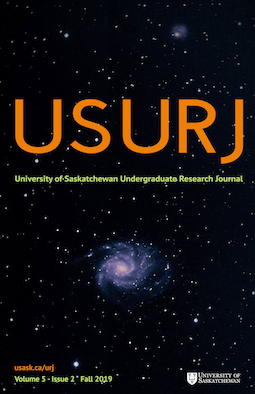Neurodevelopmental Changes in Offspring Prenatally Exposed to Opioids in Human Children and Rodent Models: A Review
DOI:
https://doi.org/10.32396/usurj.v5i2.369Keywords:
opioid, prenatal exposure, neurodevelopment, addiction, hippocampusAbstract
The number of infants born to opioid-dependent pregnant women in North America is a growing problem. Studies that focus on the long-term effects of neurodevelopmental changes of prenatal opioid exposure in human infants are however limited. The use of rodent models to evaluate these changes may provide some insight. This review focuses on studies of rodent models exposed to opioids such as morphine, heroin, oxycodone, buprenorphine, methadone, and l-α-acetylmethadol in uteroand briefly discusses the neural and behavioural effects in human children. Most of the rodent studies reported the following neural effects: increases in caspase-3 and Bax/Bcl-2 ratio, altered NMDA activity, and decreases in BDNF expression in the offspring prenatally exposed to opioids. In addition, they showed decreases in synaptic plasticity, LTP, LTD, dendritic length, and dendritic branch number. The exposed rodent offspring were more inclined to perform poorly in the behavioural tests. Likewise, some of the human studies reported a significant difference between the exposed group and the control; however, other studies reported insignificant or no significant differences after correcting for covariates. Most of the studies suggest an impairment in learning and memory in the rodent offspring and deficits in behaviour and cognition in human children; however, this was not always the case. It is still not clear whether the effects of prenatal opioid exposure are due to the opioid itself being the prime factor, as various factors may also contribute to the results. Further studies of the effects of early opioid exposure on neurodevelopment in the offspring are required.
Downloads
Published
Issue
Section
License
Articles: USURJ’s current Publication Agreements apply a Creative Commons Attribution-NonCommercial License (CC-BY-NC) by default. The CC BY-NC license lets others remix, tweak, and build upon work non-commercially. The author(s) can choose a different CC license, as outlined in https://creativecommons.org/about/cclicenses/. Please see the PDF for each article to determine what license is applied to that article. Author(s) can also request to reserve all copyright (All Rights Reserved). If there is no indication for articles published before September 2020, assume the author retains all rights beyond those necessary for publication by USURJ. All articles published after September 2020 will apply one of the aforementioned CC licenses. See the Publication Agreement under the Submission Preparation Checklist or Author Guidelines for more information. Artwork: All copyright for the original artwork remains with the artist unless they wish to apply a Creative Commons (CC) license to the artwork. Please see the PDF for each artwork to determine what license is applied to that artwork.







